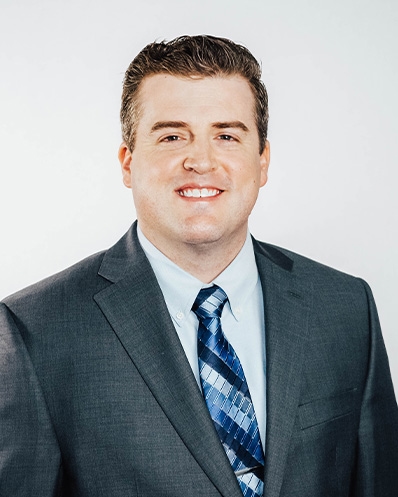Beyond CPAP: Mask-free Options for Sleep Apnea
- Category: ENT
- Posted On:
- Written By: Dr. Joshua Bradshaw

Obstructive Sleep Apnea (OSA) is a very common condition, one that most people associate with a CPAP mask and hose. But today, there are several options, including implanted devices, in-office surgeries, and simple procedures that can help you breathe easier at night.
We spoke with Dr. Josh Bradshaw, board-certified ENT in Layton and Bountiful, to learn what else patients can consider if they struggle with their CPAP mask or machine.
First, What Is Obstructive Sleep Apnea?
OSA happens when something blocks your airway while you sleep. Your tongue, tonsils, or other soft tissues can fall back and make it hard to breathe. It’s different from central sleep apnea, where the brain forgets to tell your body to breathe.
In all cases of OSA, the goal is to keep your airway open—whether that’s with a machine, a device, or a procedure. OSA is the most common type of sleep apnea.
The Gold Standard: CPAP
CPAP stands for continuous positive airway pressure. It uses a mask and machine to push air through your airway all night long. When it works, it works well. But many people can’t tolerate it.
“They don’t like the mask, the pressure, or having to travel with a machine,” said Dr. Bradshaw. That’s where other options come in. Here are a few of them to discuss with an ENT doctor.
Option 1: Mandibular Advancement Device (MAD)
This is a custom mouthguard that pulls your lower jaw forward while you sleep. That opens up the back of your throat and makes breathing easier.
Dr. Bradshaw says this device works well for people with mild to moderate OSA—and his office even makes them onsite.
Option 2: Uvulopalatopharyngoplasty (UPPP)
UPPP is a surgery that removes tissue from the back of your throat—like the uvula and sometimes the tonsils. “It expands the airway to reduce blockage,” said Dr. Bradshaw. It’s often used when there’s a lot of tissue crowding the back of the mouth.
Option 3: Tongue Base Reduction
This procedure uses a special tool to shrink the base of your tongue. It’s helpful when the tongue is what’s causing the blockage.
Option 4: Airlift (Hyoid Suspension)
Airlift is a surgical technique—not really a device. An ENT surgeon places a suture to pull the hyoid bone (a small bone in the neck) up and forward. This opens the lower part of the throat.
“Airlift is not always curative,” Dr. Bradshaw noted, “but it’s a helpful, low-risk tool when used in the right cases.”
Option 5: The Inspire Implant
Inspire is the most exciting innovation in OSA treatment right now. It’s a small implant, similar to a pacemaker, that stimulates a nerve to move your tongue forward while you sleep. No mask. No air blowing into your face.
“Inspire is really where sleep apnea treatment is going,” Dr. Bradshaw shared. “Patients love it—around a 95% satisfaction rate—data from Inspire tells us that people use their Inspire implant more consistently than CPAP users.”
Inspire is used for people with moderate to severe OSA who:
- Have an apnea-hypopnea index (AHI) between 15 and 100
- Have tried and struggled with a CPAP and other non-invasive treatments
- Have a BMI below 35–40 (depending on insurance)
- Do not have complete collapse at the level of the palate
You control Inspire with a small remote. Just turn it on before bed, and off when you wake up.
Note: The best OSA treatment plan for you should be evaluated by your ENT. “I like to perform a drug-induced sleep endoscopy for many patients to determine where the issue is and which of these options would be most beneficial,” says Dr. Bradshaw.
Should I consider a CPAP alternative?
“There’s no one-size-fits-all approach to treating sleep apnea,” said Dr. Bradshaw. “Inspire is cutting-edge, but it’s just one of the tools we use to help patients breathe better.”
If you’ve struggled with CPAP or want to learn more about your options, talk to a sleep specialist or ENT. The right treatment can help you get the rest you need—minus the noise, mask, or nightly frustration.
---

Dr. Joshua Bradshaw is a board-certified ENT doctor in Utah. He practices in Bountiful and Layton at Mountain West ENT. Dr. Bradshaw is accepting new patients for all ENT conditions, including consultations exploring CPAP alternatives. Reach his office at 801-295-5581.